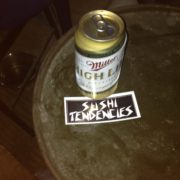Second, Japan’s armed forces had to comply with the government’s surrender. The National WWII Museum, Gift of Dylan Utley, 2012.019.721. This means a reasonable assurance of future world peace. The game that accompanies us is Unconditional Surrender! It is often demanded with the threat of complete destruction, extermination or annihilation or simply put with the threat of erasing one completely as the only alternative. He and other dissenting voices believe that the real reason Japan surrendered was down to something far less titanic and earth-shattering than the nuclear bombs. When Germany invaded Poland on September 1, 1939, it was the second time the world went to war. These were conventional bombs, but no less effective at slaughtering civilians. He secured their agreement to approach the Soviets. Oxford University Press, New York, 2020, 288 pages. On Kodiak Island, Grigory Shelikhov, a Russian fur trader, founds Three Saints Bay, the first permanent Russian settlement in Alaska. In what later became known as Victory Day, an official announcement of Japan’s unconditional surrender to the Allies is made public to the world on August 14, 1945. #OnThisDayInHistory American B-29 bomber the Enola Gay drops the world's first atom bomb over the city of Hiroshima. The opening words . On September 2, 1945, the Japanese representatives signed the official Instrument of Surrender, prepared by the War Department and approved by President Truman. “The domestic situation” became the euphemism these elite leaders employed to mask their real fear. Hence, these top uniformed leaders refused to concede that the United States possessed more than one bomb, or perhaps a few, but not an arsenal of powerful atomic weapons. General Douglas MacArthur and Japan's Emperor Hirohito in 1945, a few weeks after Japan's surrender on September 2, 1945. The Japanese Instrument of Surrender was the written agreement that formalized the surrender of the Empire of Japan, marking the end of hostilities in World War II.It was signed by representatives from the Empire of Japan and from the Allied nations: the United States of America, the Republic of China, the United Kingdom of Great Britain and Northern Ireland, the Union of Soviet Socialist . World War 2's official end was on September 2nd, 1945 when Japan had agreed upon an unconditional surrender to the Allied Powers on August 14th 1945. From its inception, the Great War was by no means confined to the European continent; in the Far East, two rival nations, Japan and China, sought to find their ...read more. On August 6 Hiroshima was bombed. VJ-Victory over Japan-Day had taken . The Fall of Japan is an abundant source of insight and perspective on the final weeks of World War II in the Pacific. And they were stopped, weren't they. This article is part of an ongoing series commemorating the 75th anniversary of the end of World War II made possible by Bank of America. The Germany and Japan of today are free, democratic societies. (Courtesy of U.S. National Archives) It produced no actual bomb, but it educated top officials that the production of fissionable material to make an atomic bomb was stupendously difficult. Things only changed on 9 August, the very day of the second atomic attack on Nagasaki, when the Soviets suddenly broke the pact, mounting a massive invasion of Japan’s territories that decimated Japanese troops. ...read more, A major outage knocked out power across the eastern United States and parts of Canada on August 14, 2003. The Byrnes Note, issued on August 11th, 1945 after the dropping of the second atomic bomb, clarified for the first time that the United States would allow the Emperor to remain on his throne, "subject to the Supreme Commander of the Allied powers." Learn more about the declaration's terms and the Japanese response. Emperor Hirohito meets War Minister Hideki Tojo, October 1941. In the presence of 50 Allied generals and other officials, the Japanese envoys boarded the American battleship Missouri in Tokyo Bay to sign the surrender document. Could it really be possible that, all these decades later, after so many countless books, films, textbooks and TV documentaries, we’ve got the final days of World War Two all wrong? By July 1945, Germany had surrendered, and the war in Europe was over. Japan might have to give up her overseas conquests and endure a period of disarmament. This little-known aircraft was part of the last air battle of World War II. Marquis Kido, Hirohito’s principal adviser, presented to him a memorandum proposing a path to peace in June 1945. When FDR died on April 12, 1945, Harry Truman had served as Vice President for just 82 days. Unconditional Surrender: The Domestic Politics of Victory in the Pacific. Like his predecessor Franklin Roosevelt, Truman demanded "unconditional surrender." That was why Japan continued fighting. The key reason why the Allied Forces refused Japan's initial surrender because it was not an unconditional surrender. As the Declaration bluntly put it, "the alternative for Japan is prompt and utter destruction". However, the Japanese did not provide a timely response. Record Group 80-G General Records of the U.S. Navy. Top naval leaders allowed that the Americans might have used an atomic bomb, but even so, they could not possess more atomic bombs, or if they did, they would not be that powerful. This was spurned by his military paladins—yet another signal the armed forces recognized no master. Japanese officials examined the Potsdam Declaration and presented to General Douglas MacArthur's occupation command their argument that Japan's surrender was contractual and conditional. 1945: Japan signs unconditional surrender Japanese officials have signed the act of unconditional surrender, finally bringing to an end six years of world war. Japan accepts Potsdam terms, agrees to unconditional surrender. HISTORY reviews and updates its content regularly to ensure it is complete and accurate. . Press photographers snapped pictures as FDR, flanked by ranking members of Congress, signed into law the historic act, which guaranteed an income for the unemployed and retirees. Marc Gallicchio is Professor of History at Villanova University and the author of Unconditional: The Japanese Surrender of . Enlarge The Japanese envoys sign the Instrument of Surrender on board the U.S.S. Unconditional: The Japanese Surrender in World War II (PIVOTAL MOMENTS IN AMERICAN HISTORY) - Kindle edition by Gallicchio, Marc. 288 pages. Gibson’s heroics helped his team sail to an 11-0 victory over the Pittsburgh Pirates. Tokyo, for example, had been completely incinerated, with around 100,000 people killed. Some historians certainly think so. Let’s recap the conventionally accepted account of how the bloodiest conflict in the history of the world finally came to an end. Since they were Government property, the general turned over to the Department in 1953 these volumes and related source materials. The Japanese surrender ceremony was held on September 2, aboard the United States Navy battleship USS Missouri, at which officials from the Japanese governme. Ivory/cream silk with green print. But this did not mean the war assuredly would end because it remained very uncertain that Japan’s armed forces would comply even with the emperor’s order. It's a gripping story, beautifully told' BERNARD CORNWELL, author of The Last Kingdom 'This is top-notch narrative history . UNCONDITIONAL The Japanese Surrender in World War II By Marc Gallicchio. But there was one possible way to avoid the mass casualties of a ground assault, and that was to unleash the awesome, unprecedented power of a new weapon: the nuclear bomb, which had been developed in secret by the United States. His reason: to atone for the Japanese army’s defeat, and to be spared having to hear his emperor speak the words of surrender. The successful U.S. invasions of Iwo Jima in February and Okinawa in April had brought the Pacific War to the Japanese Home Islands' doorsteps. Until 9 August, they held out hope that the Soviets, as a neutral party, could help them negotiate the best deal with the US. On 6 August, a mushroom cloud rose above Hiroshima, heralding the dawn of a new, apocalyptic age. As historian Terry Charman tells us, “The Soviet attack changed all that. The leadership in Tokyo realized they had no hope now.” In fact, the situation was now completely reversed, with the Japanese fearing a Communist invasion which would overturn their rigid, imperial hierarchy and transform their nation forever. In 1666, the Great Fire of London began. WATCH: Hiroshima: 75 Years Later on HISTORY Vault. This book discusses the decision to use the atomic bomb. Libraries and scholars will find it a necessary adjunct to their other studies by Pulitzer-Prize author Herbert Feis on World War II. Originally published in 1966. Missouri. Japan Surrenders, August 10-15, 1945. The Japanese Instrument of Surrender was the written agreement that formalized the surrender of the Empire of Japan, marking the end of hostilities in World War II.It was signed by representatives from the Empire of Japan and from the Allied nations: the United States of America, the Republic of China, the United Kingdom of Great Britain and Northern Ireland, the Union of Soviet Socialist . The fact that the Soviets had done bugger all to fight them until they decided at the very end that they wanted a piece of the action can hardly be regarded as sufficient to allow Stalin to. Book Review published on: November 20, 2020. FDR ...read more, It was during their collaboration on 1983’s “Say Say Say” that former Beatle Paul McCartney is said to have advised King of Pop Michael Jackson to invest some of his enormous wealth in music publishing. Japanese prisoners of war in Guam bow their heads on Aug. 15, 1945, after hearing that Emperor Hirohito has agreed to Japan's unconditional surrender. https://t.co/Fv6Hjn8zjO pic.twitter.com/D5Ij24u77I. Fair warning was issued to the Japanese in the form of the "Potsdam Declaration" of July 1945, which demanded the "unconditional surrender of all Japanese armed forces". $27.95. This was primarily because of the American campaign of devastating fire-bombing attacks on cities, and the increasingly dire food situation. Now the events of World War II from the first shots to the final surrender of the Axis powers are well known (and covered by . On August 10, 1945, just a day after the bombing of Nagasaki, Japan submits its acquiescence to the Potsdam Conference terms of . What Can We Learn About World War II From Black Quartermasters? All Rights Reserved. //-->





